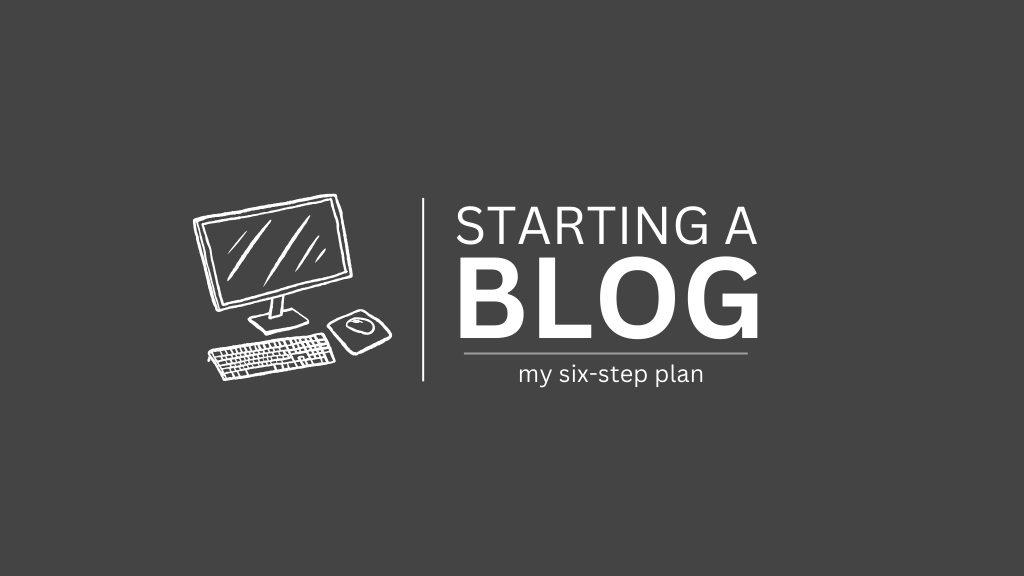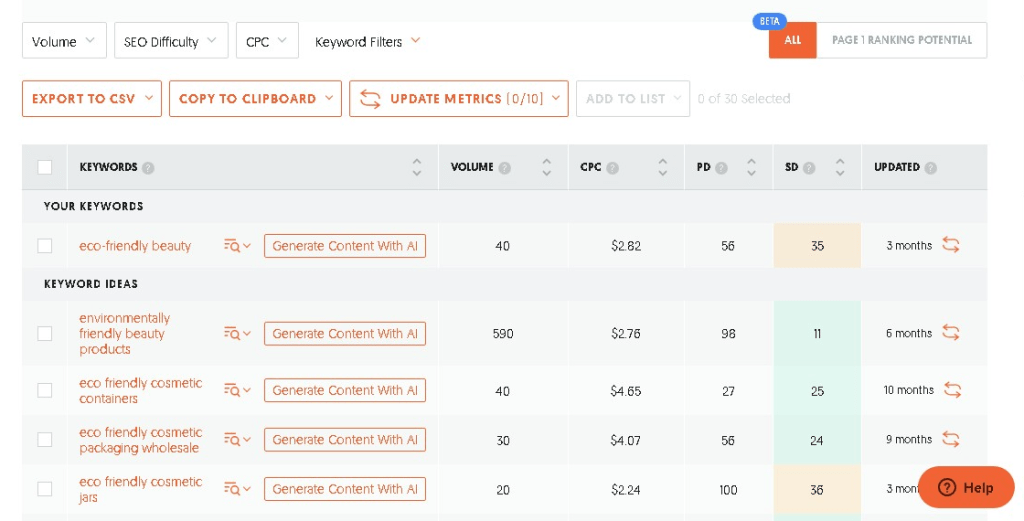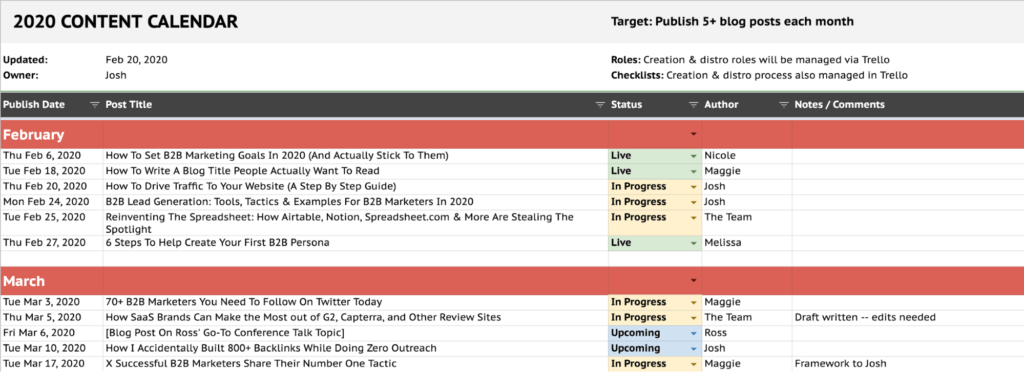
Starting a blog in 2025 might not be as easy as it used to be. With millions of blogs already on the internet, getting noticed takes more than just publishing a new post.
This strategy worked just a few years ago, but now, success relies on so many things, including a clear vision, a focused plan, and an understanding of the latest tools and trends.
If you’re thinking about starting a blog this year, you’re lucky because I’ll be showing you my 6-step plan built on years of experience and the latest strategies that work for new bloggers.
In this guide, you’ll learn how to pick a profitable niche, set up a reliable blog foundation, grow an engaged audience, and turn your blog into something that doesn’t just survive but thrives.
Let’s get started!
1. Choose a Niche Based on Interest and Profitability
You’ve probably heard that your blog niche should be something you are passionate about. While I don’t dispute that, I strongly recommend choosing a niche that has a high demand for products you can recommend.
In 2025, choosing a blogging niche goes beyond choosing a topic you’re passionate about. In fact, finding a niche that combines your interests with a clear path to profitability is the deal.
A well-chosen niche can set you up for long-term success, help you attract the right audience, and create content that genuinely resonates with readers.
Why Choosing a Profitable Niche Matters in 2025
Blogging is increasingly competitive these days, and standing out requires a focus on a niche that has both demand and profit potential. Why? Because you need people to read your blog, and you need to make money from it.
So, focusing on passion alone isn’t an idea you should buy in 2025. What if your passion has low demand?
For instance, if you’re passionate about topics like “birdwatching,” you might want to ask yourself what chances you have to build an audience around the topic.
A niche that’s both popular and increasingly profitable could help you reach a more engaged and interested audience, and also give you more opportunities to monetize down the line.
So, how do you choose a niche for your blog?
Identify Your Interests
Choosing a niche should start with a bit of self-reflection. First, ask yourself these questions to help uncover your areas of interest and strength:
- What topics could you talk about endlessly?
- Which hobbies or skills do you genuinely enjoy sharing with others?
- What kind of books, podcasts, or YouTube channels do you gravitate toward?
- Do you have any unique experiences or expertise that could add value to your content?
Once you answer these questions, you should have a list of potential niches you can write about. But this list isn’t the final list. you need to balance competition and profitability to make a final decision.
Balancing Competition and Profit Potential
Once you’ve identified your interests, it’s time to research the niche’s profitability and competition.
To do this, you need to conduct keyword research using tools like Ubbersuggest and SEMrush. Just plug in your seed keyword (your interest), and you will be able to gauge the level of competition and see if there’s demand for your topic.
For example, let’s say I’m interested in “eco-friendly beauty”, a keyword search will show me how many people are actively searching for related terms.

As you can see from a simple search, not so many people are interested in this topic. So, look for topics with a decent search volume but moderate competition.
But don’t let high competition scare you away completely. Sometimes, even high competition often means there’s a strong market.
2. Select a Reliable Hosting Plan – Avoid Cheap Options
A strong, reliable hosting plan is one of the pillars of a successful blog. Ask any blogger. If you choose a bad one, it will harm your blog.
When starting as a new blogger, it can be tempting to search for cheap or free web hosting, but this choice often leads to limitations that can hurt your blog’s performance in the long run.
Even though there are cheap web hosts for bloggers that are acceptable, you need to know exactly what you are getting.
Why Cheap Hosting May Cost You More in the Long Run
Cheap web hosting plans can come with hidden downsides that might not be apparent at first.
These plans typically offer limited resources, including lower storage, slower loading speeds, and restricted customer support. and all these can hurt user experience.
Imagine investing time in your blog only to find that readers can’t access it because of server downtime. This can lead visitors to click away and even affect your search engine rankings.
Cheap hosting can also compromise your blog’s security. This means that hackers can hijack your blog’s admin area and take absolute control of your blog, locking you out.
To worsen it, some heap and free web hosts may display ads on your blog and make money from your content.
Criteria for Choosing the Right Hosting Provider
When selecting a hosting provider, consider the following key factors:
- Traffic Expectations: Estimate the number of visitors you anticipate in the first six months. Some hosts offer scalable plans that grow with you, so starting with a provider that can handle increased traffic is beneficial.
- CMS Compatibility: If you’re using WordPress, look for a provider with strong WordPress support for easy integration and optimized performance.
- Uptime Guarantee: Seek out a host with at least a 99.9% uptime guarantee to ensure your blog remains accessible.
- Security Features: Look for providers offering security features like SSL certificates, firewalls, and malware scans to keep your site safe.
- Renewal Costs: Some hosts attract customers with low initial prices, but their renewal rates can be significantly higher. Be sure to check long-term costs before committing.
Recommended Hosting Providers
While there are many hosting providers to consider, here are a few options known for quality service:
- Hostinger: Known for its affordable plans with solid performance, this web host is a great choice for beginners looking for reliable hosting without breaking the bank.
- Accu Web: A top choice for WordPress users, Accu offers excellent customer support, strong security features, and a high uptime guarantee.
- Namecheap: If you’re looking for a balance between cost and features, this host provides flexible plans with good security and customer service options.
3. Build a Social Presence Before Blog Launch
As a new blogger, you don’t need to rely on SEO to drive traffic to your blog, especially when your domain authority is below DA 20.
What I would do instead is to build a social media presence ahead of my blog launch. This way, I will be able to build an audience that I can promote my blog to, and drive traffic from day one.
This approach can save you from launching to an empty room and helps you hit the ground running with a built-in following ready to engage.
Plus, it’s an ideal way to test and understand your audience’s preferences before diving into full-scale blog production.
Platforms like Pinterest have proven particularly effective for driving blog traffic, with many bloggers reporting substantial growth through Pinterest marketing.
Choosing the Right Social Media Platforms
Each platform offers unique benefits depending on your niche.
- Pinterest: An excellent choice for bloggers in lifestyle, DIY, food, and travel niches. Pinterest acts like a visual search engine, which makes it perfect for sharing blog posts, guides, and how-to content.
- Instagram: Great for visual niches like fashion, beauty, and travel. Use Instagram Stories to share previews of your content or connect with readers personally.
- Twitter: Ideal for tech, news, and business blogs. Twitter is fast-paced and can help you keep up with current trends while sharing quick insights or updates with your audience.
Consider using a tool like Tailwind for scheduling content on platforms like Pinterest and Instagram. Tailwind can streamline your social media efforts, letting you set up pins and posts in advance to keep your audience engaged consistently.
4. Develop a Content Strategy with a Consistent Posting Schedule
When building a blog, you should focus on consistently creating content that both readers and search engines can rely on.
A consistent content strategy will keep your blog active, and also improve your site’s SEO, helping you rank better on search engines and grow your audience faster.
Consistency builds trust and reliability with your readers. If visitors know they can expect fresh content from you weekly or biweekly, they’re more likely to come back regularly. Studies show that blogs with frequent, consistent posts retain a higher percentage of their audience, which means more engagement and a stronger following over time.
So, how do you develop a content strategy with a consistent posting schedule? Let’s start with a content calendar.
Building a Content Calendar
A content calendar is one of the best tools for staying organized and consistent with your blog posts. It helps you plan content topics, set deadlines, and allocate time for promotion.
Here’s an example:

Creating one is easy, and you have to create it inside Excel. Here’s how to create one:
- Brainstorm Content Ideas: Start with broad topic areas within your niche. Break these down into specific post ideas based on common reader questions, seasonal themes, or trending topics.
- Determine Posting Frequency: Decide how often you can realistically publish. For new bloggers, starting with one or two posts per week is manageable. Once you find a rhythm, you can adjust to increase frequency as needed.
- Set Achievable Goals: Set deadlines and include any upcoming events or holidays that might impact your content (e.g., seasonal trends). This will keep you organized and allow time to create quality posts without feeling rushed.
Best Practices for Publishing Frequency and Timing
Publishing at optimal times can increase visibility and reader engagement. Research suggests that most readers are active on weekdays, especially on Tuesday and Thursday mornings.
Tailoring your publishing times to when your audience is most active can help boost initial views and engagement on your blog and social media.
For example, if your blog covers productivity tips, posting on Monday mornings could catch readers looking for a motivational start to their week.
5. Focus on Building Traffic Before Monetizing
It’s every blogger’s aim to make money from their blog, but that shouldn’t be your focus in the early stage of your blogging journey.
In fact, focus on building traffic to your blog because monetization efforts are likely to fall flat without a steady flow of traffic. Only after gaining consistent traffic can you monetize your blog.
Think about it, can you sell a product or service when you have no one to sell to?
The same goes for your blog. Without a decent-sized audience, any attempts to earn through ads, affiliate links, or products will bring minimal returns.
Building traffic before monetization will also help you learn which topics resonate most with readers so that you can tailor future content and monetize with products or services that match your audience’s needs.
How to Drive Traffic
There are several ways to drive traffic to a new blog, both free and paid methods. But as a total beginner, don’t recommend paying for traffic unless you have a product to sell.
So, here are the free effective ways to promote your blog:
- Search Engine Optimization (SEO): Optimize your posts for search engines by focusing on keywords, meta descriptions, and backlinking. A tool like Ubbersuggest can help you identify valuable keywords in your niche and optimize your posts to rank higher on Google.
- Social Media: Use platforms like Facebook, Twitter, and especially Pinterest to share your blog posts with a broader audience. Pinterest, in particular, has a strong reputation for driving traffic to blogs and is a popular tool for bloggers in lifestyle, food, and home decor niches.
- Guest Blogging: Contribute posts to other established blogs within your niche. Not only does this give you backlinks (which help with SEO), but it also introduces you to a new audience who may visit your blog.
- Email List Building: Start growing an email list from day one. Email subscribers are often your most loyal readers, and by regularly engaging them with your content, you’re building a community that is more likely to support monetization in the future.
Each of these methods takes time and effort, but they’re guaranteed to drive sustainable, long-term traffic.
6. Approach Blogging Like a Business
I know some of us started blogging simply because we want to share our knowledge with internet users. but the moment you start treating your blog as a business, you will quickly understand how profitable this thing is.
Blogging as a business means focusing on consistency, building value, and planning for the future. You need to approach each step with a business mindset to increase your chances of building a side hustle with it.
When you view your blog as a business, you understand that growth doesn’t happen overnight.
Just as businesses take time to establish, your blog will require dedication, investment, and long-term maintenance.
Approaching blogging with a business mindset also means focusing on quality content that serves readers, as well as consistent branding across all platforms.
So, how do you blog like a business?
Oh, it’s simple:
- Produce quality content regularly
- Engage with your audience
- Maintain consistent branding across platforms
- Experiment with different monetization strategies
Practical Tips and Tools for Successful Blogging in 2025
As a beginner, you don’t need all the blogging tools on the web to run your blog. But, equipping yourself with the right tools can significantly streamline your blogging efforts and increase your chances of success.
In fact, every stage of the journey requires a tool, and I am going to break it down here.
SEO and Keyword Research Tools
You need to make sure that your blog is SEO-friendly from day one. So, you need to find and arrange your keywords when choosing a niche, and during content creation.
Optimizing your content for search engines is essential for attracting organic traffic. Using SEO tools like these can help you identify keywords, track your rankings, and find opportunities to improve your visibility.
- Ubbersuggest: This tool is widely regarded for its detailed keyword research capabilities. It provides insight into keyword difficulty, competitor analysis, and backlink opportunities.
- Rank Math: A powerful WordPress SEO plugin that helps guide you on how to create SEO-optimized content.
- Google Keyword Planner: As a free option, Google’s tool is excellent for basic keyword research, helping you identify which phrases people are searching for in your niche.
Design Tools for Engaging Visuals
High-quality visuals are essential to draw readers in and keep them engaged. So, you need design tools to create them. Here are a few popular ones:
- Canva: An intuitive design tool, Canva lets you create everything from blog post images to social media graphics. It’s user-friendly and saves you the cost of hiring a designer.
- Unsplash: If you need high-quality, free images, Unsplash has a large library to choose from.
Social Media Scheduling Tools
Growing your blog’s reach on social media is much easier with scheduling tools, as they help you stay consistent and reach your audience effectively.
Here are the scheduling tools I use:
- Tailwind: Tailwind is particularly popular with Pinterest users, allowing you to schedule pins and analyze which ones drive the most traffic to your site.
- Buffer: This scheduling tool lets you plan posts for various platforms, including Facebook, Twitter, and Instagram.
Wrapping it up
Starting a blog in 2025 might feel like a challenge, but with the right steps, you can build a blog that truly stands out.
Start by choosing a focused niche, then invest in reliable hosting, build an audience, and create valuable content consistently.
Blogging is a long-term commitment, but with a strategic plan and the right tools, it can be both rewarding and profitable.
FAQs
Finding the best niche depends on your interests and what audiences are actively searching for. Niche ideas like personal finance for millennials, eco-friendly home living, and digital nomad lifestyle are popular in 2025 and provide room for growth and monetization.






![How to Start a Blog: The Ultimate Beginner’s Guide [Updated]](https://builtonhustle.com/wp-content/uploads/2024/12/start-a-blog-336x220.png)
